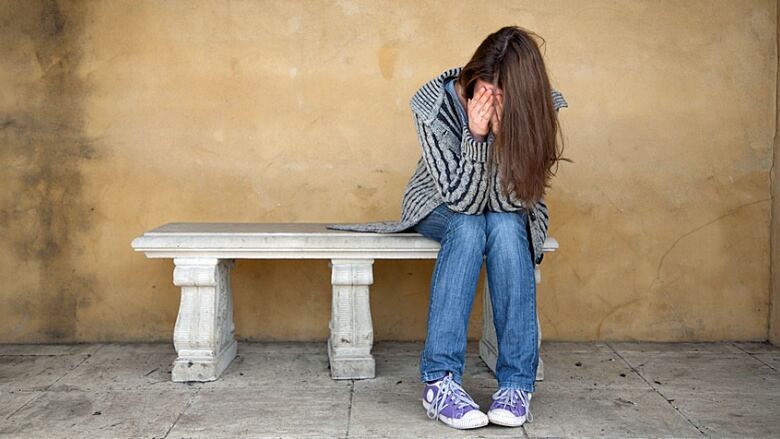Strokes on rise among young people
'Simply not true' that this medical emergency hits only older people

It's time to bust the dangerous myth that only elderly people have strokes, medical experts say.
"There's a public perception that stroke only affects people who are older and that's simply not true," Dr. Michael Hill, directorof the Stroke Unit for the Calgary Stroke Program atAlberta Health Services, told CBC News.
"As a practisingneurologist I see a fair number of young people with strokes,so it's not out of the ordinary."
While the majority of strokes strikepeople over 65, 10 to 15 per cent affect individuals 45 and younger and that number is on the rise.
- Long work hours may raise stroke risk
- Strokes difficult to recognize, even for doctors
- Stroke success in Canada could be strained
According to the Heart and Stroke Foundation of Canada's2014 annual report, strokes in people in their 50s have increased 24 per cent over the last decade.
A global analysis published in the Lancet in2013found the incidence of strokein people aged 20 to 64 jumped by a quarterbetween 1990 and 2010, and those patients make up almost one-third of the total number of strokes.
The Lancet study also predictedstroke rates in that age group coulddouble by 2030 somethingPatriceLindsay, director of best practices and performances at the Heart and Stroke Foundation, called "terrifyingly scary."
It's a different world
"The world we live in now is different than it used to be. People in our age group are working hard, they work much longer hours. There's an incredibly stressed work environment where people perceive that you have to work all these extra hours to get ahead and be successful," said Lindsay, a registered nurse who suffered a stroke at 38.
"All of that leads them to not eating properly, picking up a lot of fast food, picking up dinner on the way homelate at night, not exercising on a regular basis."
While some of the risk factors for stroke, like smoking, have declined, others, like obesity, high blood pressure and diabetes, are on the rise among younger people.
However, Hill noted that some of the rise in stroke rates can likely beattributed to improvements in diagnostic technology.
Missing the signs
Because people associate strokes with the elderly, symptoms in younger victims can often be missed or dismissed even by medical professionals.
A 2009 study by the Department of Neurology and Stroke Program at Wayne State University/Detroit Medical Center found that among 57 young stroke victims, one in seven were given a misdiagnosis of vertigo, migraine, alcohol intoxication, seizure, inner ear disorder or other problems and sent home without proper treatment.
"Physicians are also susceptibleto the same cognitive bias that I'm talkingaboutin the general public,which is that they don't naturally expect stroke to be occurring in someone who's 25, for example. However, they should, because stroke is still the most common neurological event which would occur to a 25-year-old," Hill said.
While strokes are usually sudden,about 25 to30 per cent of strokevictims report having experienced warning signs on and off in the hours or daysbefore.
"If you have sudden neurological symptoms, they have to be taken seriously," Hill said.

The morning before Sidharth Gupta, then30, suffered a massive stroke onFeb. 21, 2013, that has left him severely debilitated and unable to communicate,hetexted a friend, saying food kept falling out of his mouth while he was trying to eat breakfast.He blamed it on a hangover.
Later in the day, hewent to awalk-in clinic with numbness in his right arm and was toldit was probably just a muscle strain.
It was onlyafter he was found unconscious on the bathroom floor of a nightclub and taken to the emergency room at 3 a.m., that doctors performed a CT scan and realized he'd suffered a massive stroke that would change his life forever.
'If it walks like a duck'
The Heart andStroke Foundation usesthe FAST approach to recognizing stroke:
- Face:Is it drooping?
- Arms:Can you raise both?
- Speech: Is it slurred or jumbled?
- Time:To call 911right away
The faster a person is treated, the better the chance of a good outcome. Once a stroke begins,1.9 million brain cells die every minute.
Lindsay said it's important that people especially health-care professionals not dismissFAST symptoms in young patients, even children.
"We're working hard to say if it walks like a duck, acts like a duckand talks like a duck, it's probably a duck. Doesn't matter the age of the patient. If they have the FAST signs, whether they resolved or not, it was probably a stroke."













_(720p).jpg)


 OFFICIAL HD MUSIC VIDEO.jpg)
.jpg)



























































































